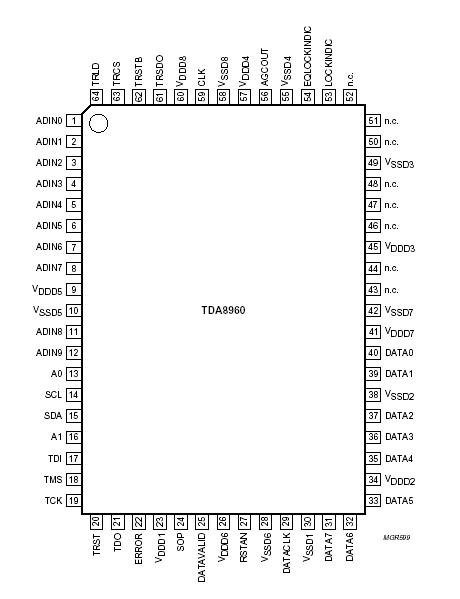TDA8960: Features: · One-chip Advanced Television Systems Committee (ATSC)-compliant demodulator and concatenated trellis (Viterbi)/Reed Solomon decoder with de-interleaver and de-randomizer· 0.4 mm process·...
floor Price/Ceiling Price
- Part Number:
- TDA8960
- Supply Ability:
- 5000
Price Break
- Qty
- 1~5000
- Unit Price
- Negotiable
- Processing time
- 15 Days
SeekIC Buyer Protection PLUS - newly updated for 2013!
- Escrow Protection.
- Guaranteed refunds.
- Secure payments.
- Learn more >>
Month Sales
268 Transactions
Payment Methods
All payment methods are secure and covered by SeekIC Buyer Protection PLUS.

 TDA8960 Data Sheet
TDA8960 Data Sheet







